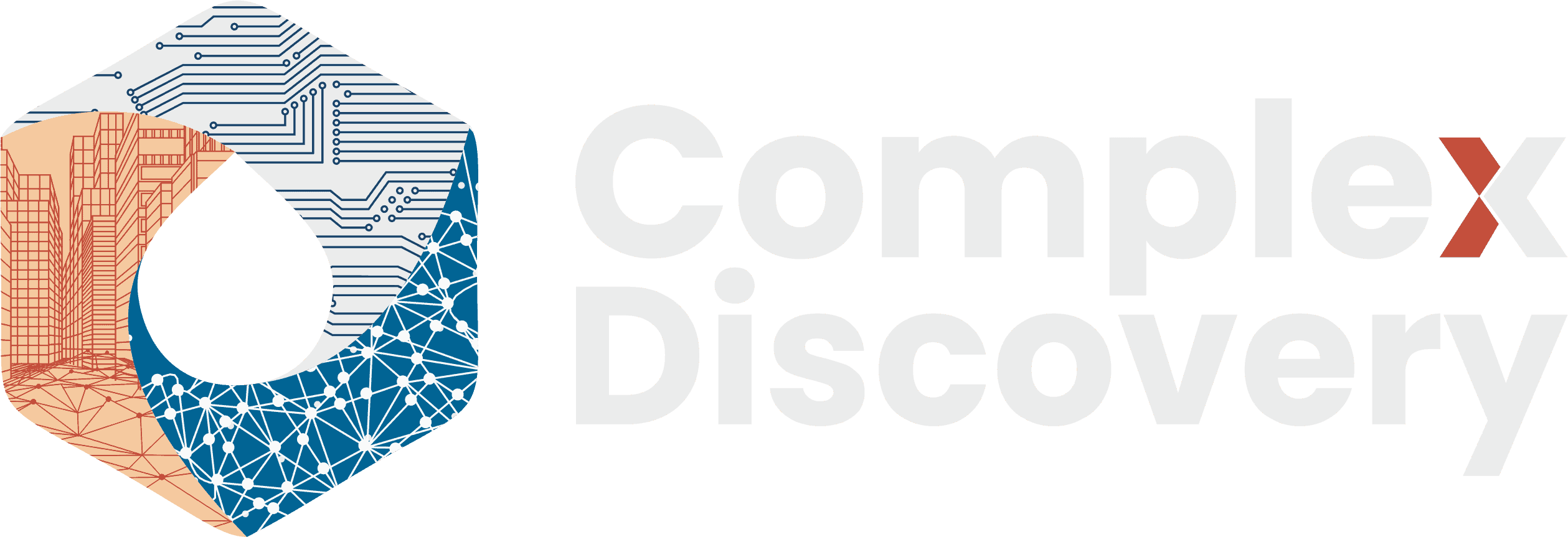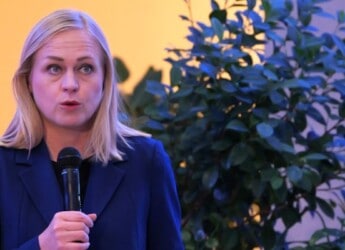Editor’s Note: Cost transparency is a powerful strategy for building trust, but it’s not a universal solution. Drawing from academic research, this article explores both the opportunities and the risks of revealing internal cost structures. For professionals in cybersecurity, eDiscovery, and information governance, where services are often complex and pricing scrutiny is high, transparency around cost inputs can enhance credibility and clarify value. But it must be handled with care. If disclosures reveal unexpectedly high profit margins or appear unrealistic, trust can erode rather than grow. When applied strategically and credibly, however, cost transparency remains a compelling tool for strengthening client relationships.
Content Assessment: Cost Transparency in Legal Tech: Building Trust Without Overexposing Value
Information - 94%
Insight - 92%
Relevance - 92%
Objectivity - 91%
Authority - 93%
92%
Excellent
A short percentage-based assessment of the qualitative benefit expressed as a percentage of positive reception of the recent article from ComplexDiscovery OÜ titled, "Cost Transparency in Legal Tech: Building Trust Without Overexposing Value."
Industry Research
Cost Transparency in Legal Tech: Building Trust Without Overexposing Value
ComplexDiscovery Staff
This report draws from findings presented in the academic paper “Lifting the Veil: The Benefits of Cost Transparency” authored by Bhavya Mohan, Ryan W. Buell, and Leslie K. John, affiliated with Harvard Business School and the University of San Francisco. The original working paper is available via the Social Science Research Network (SSRN) at https://ssrn.com/abstract=2498174 or http://dx.doi.org/10.2139/ssrn.2498174.
The Power of Disclosure in Building Consumer Trust
Would you pay more if a company told you what it paid?
It turns out, many would—and they’d trust that company more, too.
Grounded in a reasoned set of academic experiments, the concept of cost transparency offers a compelling case for companies to reconsider how they build trust. The evidence suggests that when businesses voluntarily disclose what it costs them to provide a product or service, customers respond with increased trust and a greater willingness to buy.
From Products to Services: A Universal Insight
Though the findings originated from academic research, their relevance extends into everyday business practices. Cost transparency functions not just as a pricing tactic, but as a relational strategy, one that has been shown to be effective across a range of sectors and formats. And the dynamic holds true whether you’re offering tangible goods like apparel and food, or intangible services such as consulting, legal tech support, or data protection.
For professionals in fields like cybersecurity, eDiscovery, and information governance, this trust-based tactic has powerful implications.
How Cost Transparency Works
At its core, cost transparency involves the voluntary disclosure of what it costs a firm to produce or deliver its offering. This is different from price transparency, where consumers see the final cost they must pay, or operational transparency, where the process behind the scenes is made visible. Cost transparency, instead, reveals what has traditionally been considered sensitive or proprietary information—labor, materials, and other direct expenses.
What makes this approach especially effective is its psychological impact. The act of disclosing internal costs mirrors a deeply human behavior: self-disclosure. Much like in personal relationships, revealing something sensitive builds trust. The studies show that consumers interpret this kind of openness as an honest, almost vulnerable gesture from the firm, especially when done voluntarily rather than mandated by regulation.
Evidence from the Field and the Lab
One of the more illustrative field experiments featured a university cafeteria offering a simple bowl of chicken noodle soup. When customers saw a sign that included not just the soup’s ingredients but the cost breakdown for each one, including labor, they were significantly more likely to buy. Across various additional experiments, spanning items like backpacks, chocolate, travel packages, and t-shirts, this increase in purchase intention was repeatedly observed.
Notably, the trust-building power of cost transparency isn’t just linked to perceptions of price fairness. Even when prices were surprisingly low—cases where consumers wouldn’t assume excessive profit margins—cost disclosure still enhanced purchase interest. This suggests that trust, rather than price justification alone, is the mechanism at play.
And importantly, this trust effect dissipated when transparency appeared forced, such as when participants were told the disclosure was due to regulation rather than voluntary.
Practical Applications for Service Professionals
The implications are particularly relevant in industries where trust can’t be assumed. For cybersecurity firms, offering a clear breakdown of what’s behind a managed detection and response (MDR) subscription, such as staffing levels, technology stack components, and compliance tool costs, can demystify pricing and build client confidence.
Likewise, eDiscovery vendors might consider clarifying what drives per-document or per-gigabyte costs, helping clients understand and feel better about the fees involved. Even for information governance consultants, sharing what goes into a project estimate—such as hours allocated to policy drafting, risk assessments, or training—can signal professionalism and care.
Transparency in this way can also help prevent scope creep misunderstandings, reduce invoice disputes, and build long-term client confidence.
When Transparency Goes Too Far
Still, cost transparency isn’t without its limits. It requires thoughtful application, as disclosing certain costs, especially those linked to proprietary methods or competitive advantages, could pose risks. More critically, the research identifies boundary conditions where transparency could fail or even undermine trust.
For example, when cost disclosures unintentionally reveal very high profit margins, consumer trust may erode rather than grow. This reflects a psychological balance noted in the study: while sensitive disclosures can build rapport, there’s a “sweet spot.” If the disclosed information suggests the company is profiting excessively, or if the numbers feel implausible, suspicion can override trust.
Similarly, when cost data appears too low to be believable, consumers may question the firm’s honesty or suspect hidden markups elsewhere. And if a consumer already holds skeptical views of the brand, transparency might be interpreted not as vulnerability but as manipulation, especially if perceived as a public relations tactic rather than a genuine gesture.
Finding the Right Balance
These nuances highlight that while cost transparency is a potentially powerful trust signal, it must be wielded with care. Firms should consider testing disclosures, calibrating message tone, and even conditioning transparency based on audience segmentation. Full honesty, as the research shows, is not inherently effective unless paired with perceived benevolence and credibility.
Importantly, the strength of these insights isn’t tied to any one economic moment. Whether in times of inflationary pressure, post-pandemic uncertainty, or digital transformation, the human need for trust in transactions remains constant. The findings offer enduring guidance for firms looking to build credibility, reduce friction, and create more human-centered customer experiences.
So, in your next client engagement, pitch deck, or pricing proposal, consider whether lifting the veil on your service costs might be the edge you need. Would your customers trust you more if they understood what you’re investing in to deliver value?
The evidence suggests the answer is yes, and that answer continues to hold strong today.
News Source
- Mohan, Bhavya and Buell, Ryan W. and John, Leslie K., Lifting the Veil: The Benefits of Cost Transparency (August 8, 2019). Harvard Business School NOM Unit Working Paper No. 15-017, Harvard Business School Technology & Operations Mgt. Unit Working Paper No. 15-017, Available at SSRN: https://ssrn.com/abstract=2498174 or http://dx.doi.org/10.2139/ssrn.2498174
Assisted by GAI and LLM Technologies
Additional Reading
- ComplexDiscovery OÜ – Winter 2025 eDiscovery Pricing Report: A Market in Transition
- What’s New in eDiscovery Pricing? Summer 2024 Market Report
- Shaping eDiscovery Strategies: Winter 2024 Pricing Report
- Peaks and Valleys? Summer 2023 eDiscovery Pricing Survey Results
- ComplexDiscovery Business Confidence Surveys
Source: ComplexDiscovery OÜ



























